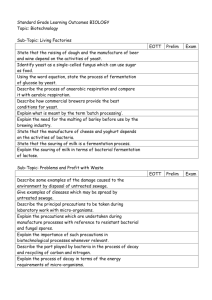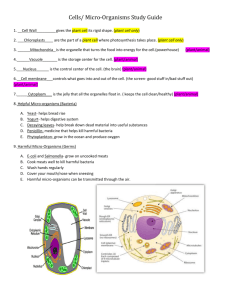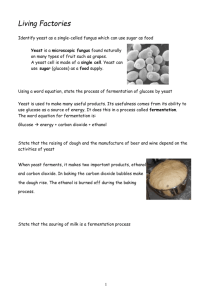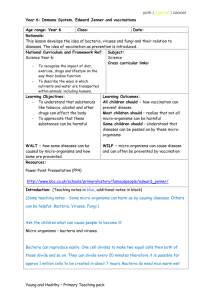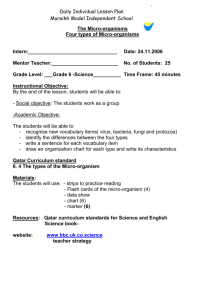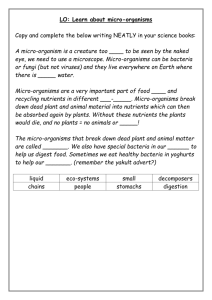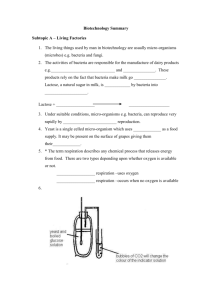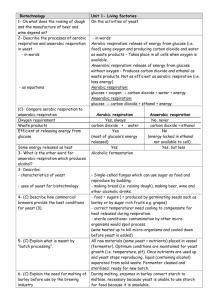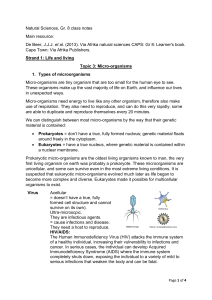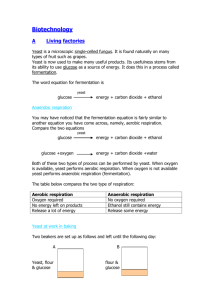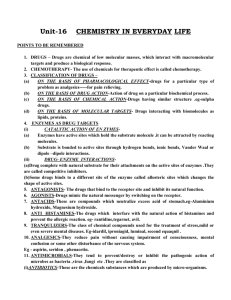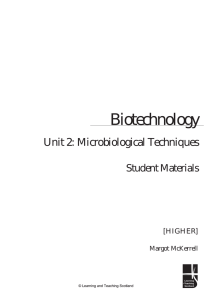Biotechnology – What you need to know
advertisement
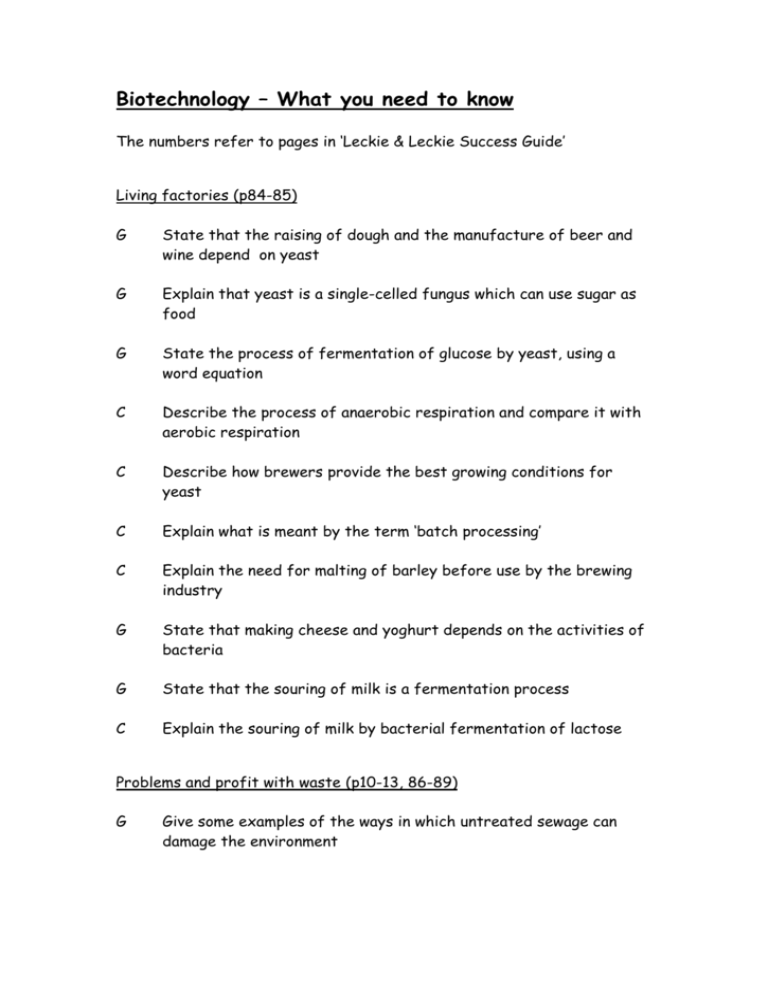
Biotechnology – What you need to know The numbers refer to pages in ‘Leckie & Leckie Success Guide’ Living factories (p84-85) G State that the raising of dough and the manufacture of beer and wine depend on yeast G Explain that yeast is a single-celled fungus which can use sugar as food G State the process of fermentation of glucose by yeast, using a word equation C Describe the process of anaerobic respiration and compare it with aerobic respiration C Describe how brewers provide the best growing conditions for yeast C Explain what is meant by the term ‘batch processing’ C Explain the need for malting of barley before use by the brewing industry G State that making cheese and yoghurt depends on the activities of bacteria G State that the souring of milk is a fermentation process C Explain the souring of milk by bacterial fermentation of lactose Problems and profit with waste (p10-13, 86-89) G Give some examples of the ways in which untreated sewage can damage the environment G Give two examples of diseases which can be spread by untreated sewage G Describe the main precautions which should be taken during lab work with micro-organisms C Explain precautions which have to be taken to destroy resistant fungal and bacterial spores C Describe the part played by bacteria in the process of decay and recycling of carbon and nitrogen C Explain that during the process of decay, micro-organisms are breaking down organic materials during respiration to obtain their energy G State that during sewage treatment, decay micro-organisms break down the sewage into harmless products C Explain why complete breakdown of sewage is only possible in aerobic conditions G Describe how oxygen is provided for micro-organisms during sewage treatment C Explain why a range of micro-organisms is needed to break down the range of materials in sewage G Give two examples of useful products which are made from waste materials by the action of micro-organisms C Explain the advantages of upgrading waste by increasing its energy or protein levels G State that alcohol and methane are products of fermentation G Explain the advantages of producing fuel from fermentation rather than from fossil sources G State that under suitable conditions micro-organisms can reproduce asexually very rapidly G State that micro-organisms can be harvested to provide protein rich food for animals or man Reprogramming microbes (p90-91) G State that bacteria are controlled by their chromosomes C Explain how genetic engineering can be achieved by altering chromosomes G State that pieces of chromosome can be transferred to bacteria from a different organism and so allow the bacteria to make different substances C State that as a result of genetic engineering bacteria may produce increased quantities of products and speed up processes C Explain the advantages of genetic engineering compared with selective breeding G Give some examples of the products of genetic engineering and their uses C Explain the increasing need for insulin produced by biotechnology G State that biological detergents contain enzymes produced by bacteria C Describe the advantages of using low-temperature biological detergents containing enzymes C Explain how biological detergents ‘digest’ stains with the use of enzymes G State that an antibiotic is a chemical which prevents growth of micro-organisms C Explain why a range of antibiotics is needed in the treatment of bacterial diseases C Describe the advantages of using immobilisation techniques C Explain the advantages of continuous-flow processing (allowed by immobilisation) over batch processing
